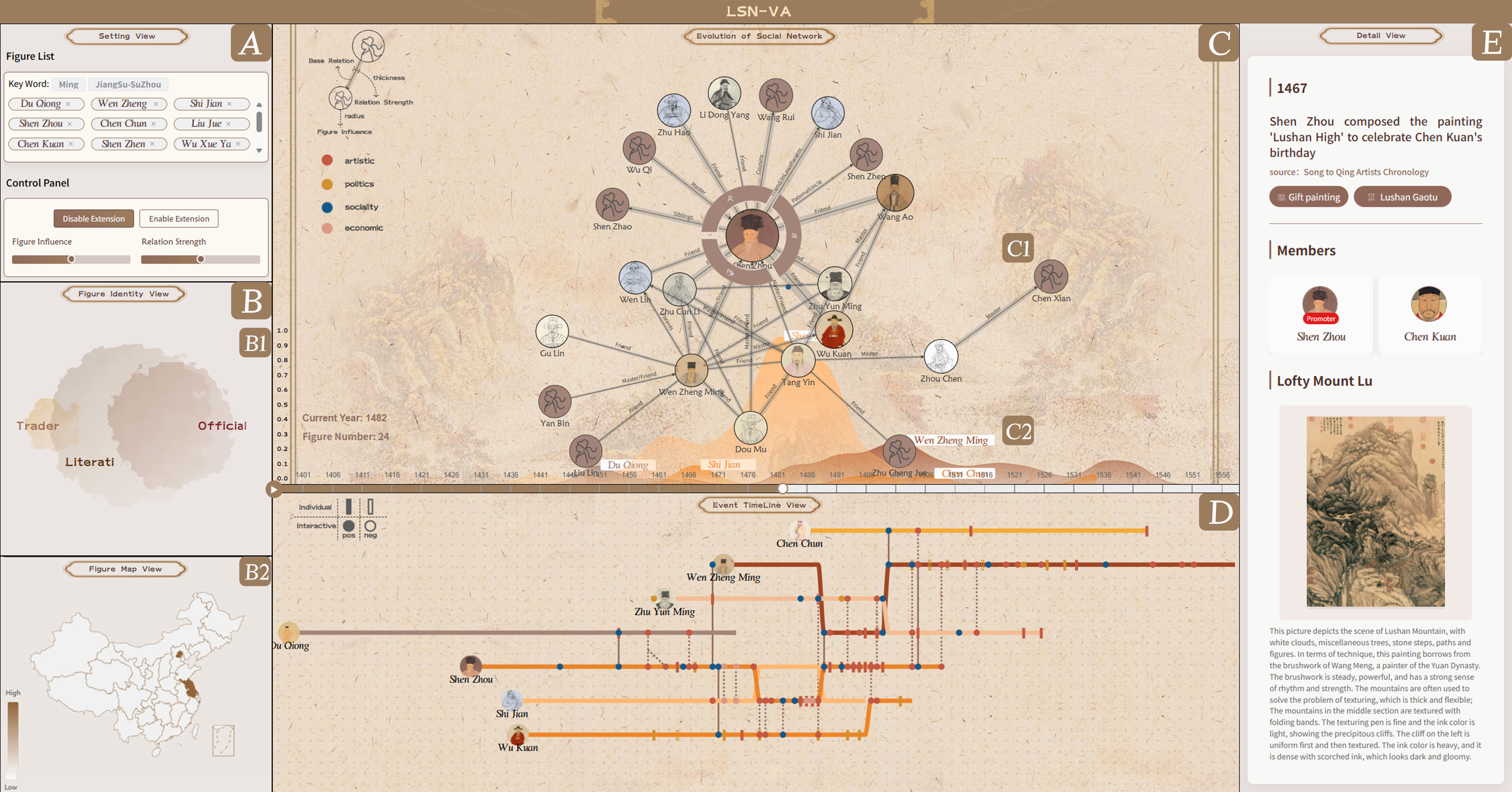LSN-VA: A Visual Analysis System for Ancient Chinese Literati Social Network
Published in ChinaVis, 2025

The interface of LSN-VA consists of five components: (A) Setting View allows users to set figures of interest and visualization parameters; (B) Network Distribution Statistics provides an overview of the figure distribution according to their identities and residences; (C) Evolution of Social Network reveals the social attributes and relations of literati from different perspectives; (D) Event Timeline View constructs event-driven storylines that contextualize interpersonal exchanges within biographical timelines; (E) Detail View provides structured metadata access through detail-on-demand interactions.
Abstract: The ancient Chinese literati society is a dynamic and complex social network based on ties of consanguinity, master-apprentice relationships, and cultural relationships through artwork-centered social events, such as exchanges of calligraphy and painting, letters, etc. In this paper, we present a visual analysis system for literati social network LSN-VA, which provides a set of intuitive visual designs to support interactive exploratory analysis of the dynamic ancient Chinese literati social network and its spatial-temporal evolution. An ancient Chinese literati dataset is first built by merging 4 historical sources and augmented using a large language model. And then a new dynamic social network modeling method is proposed to automatically infer the relationship, influence, and missing attributes of ancient Chinese literati. Finally, we conducted two case studies and one user study to demonstrate the effectiveness of our system.
Recommended citation: Yingping Yang, Guangtao You, Jiayi Chen, Zhichao Zhang, Jiazhou Chen, Xinguo Xu. “LSN-VA: A Visual Analysis System for Ancient Chinese Literati Social Network.” ChinaVis 2025. 2025.
